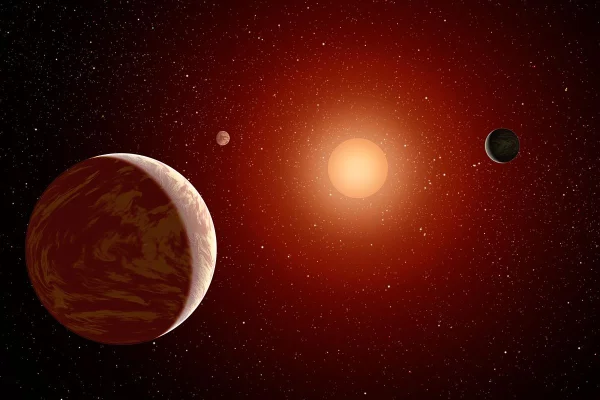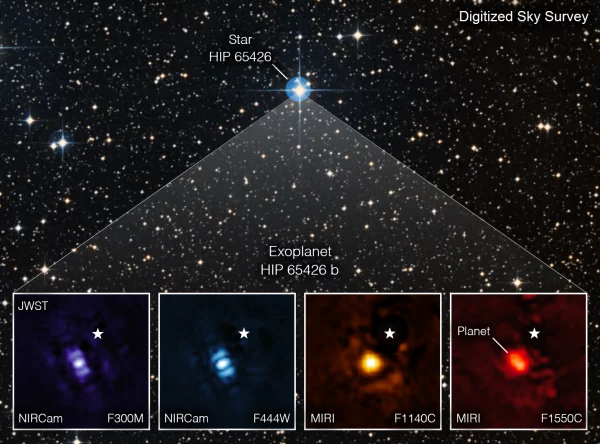In a groundbreaking discovery, international scientists have identified a potential “super-Earth” capable of supporting life, named GJ 667Cc. This planet is located approximately 22 light-years away from Earth, orbiting a red dwarf star within the triple-star system GJ 667. This finding marks a significant milestone in the quest to identify habitable worlds.
The highlight of GJ 667Cc is its position within the “habitable zone” around its host star. This region allows the planet to receive just the right amount of energy to sustain surface temperatures conducive to liquid water. “With light levels equivalent to 90% of Earth’s, primarily in the infrared spectrum, GJ 667Cc possesses ideal surface temperatures for sustaining living conditions,” emphasized Guillem Anglada-Escudé, the lead researcher, in a paper published in The Astrophysical Journal Letters (2012).
“This discovery not only deepens our understanding of the conditions for sustaining life but also broadens the scope of searching for life-supporting worlds across the cosmos,” noted Anglada-Escudé.

This discovery was made possible by combining publicly available data from the European Southern Observatory (ESO) with advanced telescopes such as the Keck Observatory in Hawaii and the Magellan II Telescope in Chile. The research team employed the radial velocity technique to detect the gravitational pull exerted by the planet on its star. Notably, the host star GJ 667C contains only 25% of the Sun’s metallicity, challenging previous assumptions that habitable planets could only form in metal-rich environments. “This finding opens new horizons in understanding how planets can emerge and evolve under unexpected conditions,” Anglada-Escudé shared.
“The advent of modern telescopes like the James Webb Space Telescope will not only allow us to identify planets but also analyze their atmospheres for signs of life,” Anglada-Escudé added.

Additionally, scientists believe this star system may host a gas giant and another super-Earth orbiting the star on a 75-day cycle, although further data is required for confirmation. These findings not only fuel hopes of discovering extraterrestrial life but also raise profound questions: “If we find life beyond Earth, how will it reshape humanity’s understanding of its place in the universe?”
The journey to uncover GJ 667Cc and similar planets serves as an invitation for humanity to continue exploring and expanding its perspective, fostering a deeper appreciation for the diversity and wonders of the cosmos.


HPX24h > Space > Exploring a New Super-Earth: Could It Support Life?
Top Reads from This Category
Space
Gamma Ray Bursts and the Key to the Chemical Composition of the Early Universe
Space
The Relationship Between Star Formation and the Activity of Supermassive Black Holes
Space
Exploring Gravitational Forces and the Evolution of the Universe
Space
The Smallest Star System with Three Exoplanets Found by NASA’s Kepler
Space
Habitable Exoplanets: Exploring Distant Worlds
Space
Could Our Universe Have Collided With Another Universe Billions of Years Ago?
Space
Exploring Saturn’s Moon Phoebe: Planet-Like Features and Characteristics
Discover New Topics
Animals
The Stunning Image of a Cheetah in Action During Its Hunt
Health
5 Tips to Help You Overcome Smartphone Addiction
Fitness
Active Recovery: The Key to Reducing Soreness and Boosting Workout Performance
Space
Jupiter-Like Planets: The Key to Unlocking Earth-Like Worlds
Health
The Best Days to Get Pregnant: How to Accurately Time Your Ovulation?
Parenting Tips
Talking To Children About Sexuality: How To Make It Easier?
Science
Blood Test: A Breakthrough in Early Detection of Alzheimer’s Disease
Animals
Baboons With Stable Relationships Live Longer and Show Greater Kindness
Healthy Eating
Why Is Nutrition Research So Complex?
Science
Science Uncovers the Brain’s Process of Storing New Ideas
Animals
Male Spiders Sacrifice Themselves to Protect Future Generations
Healthy Eating
Vegan Keto Diet: Everything You Need To Know
Science
Discover Blood Testing Technology Without a Visit to the Doctor